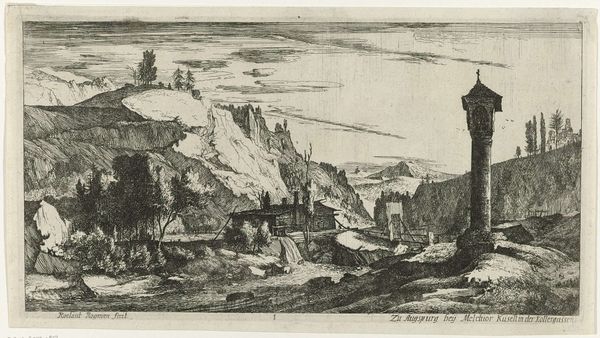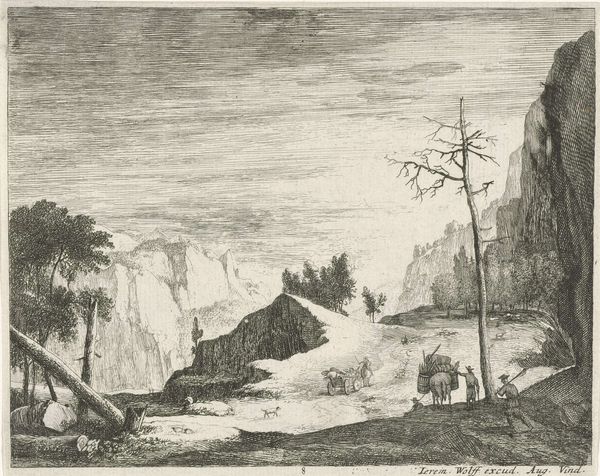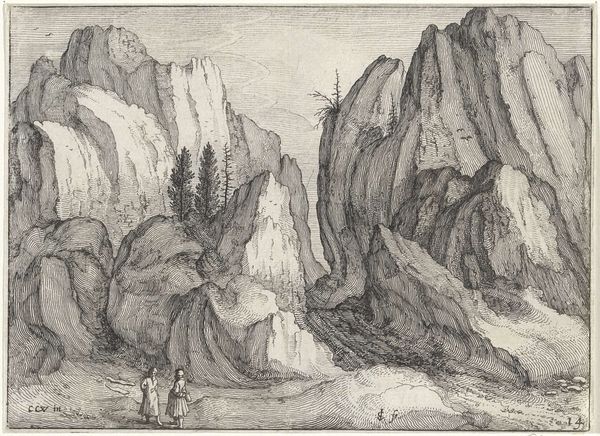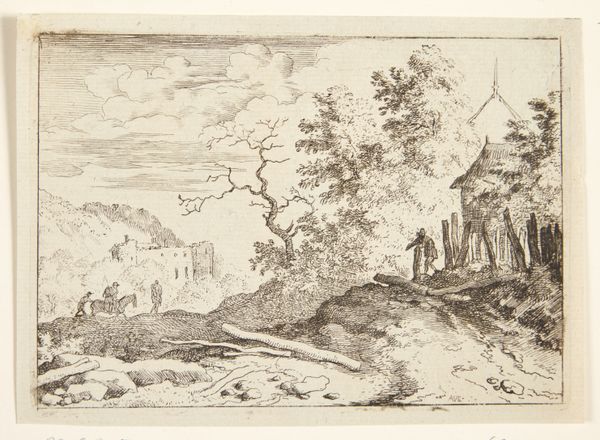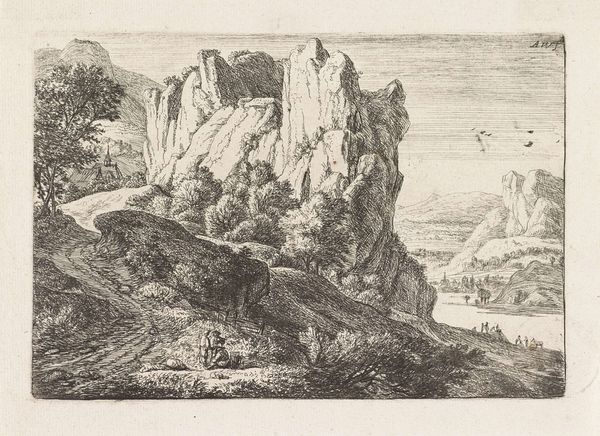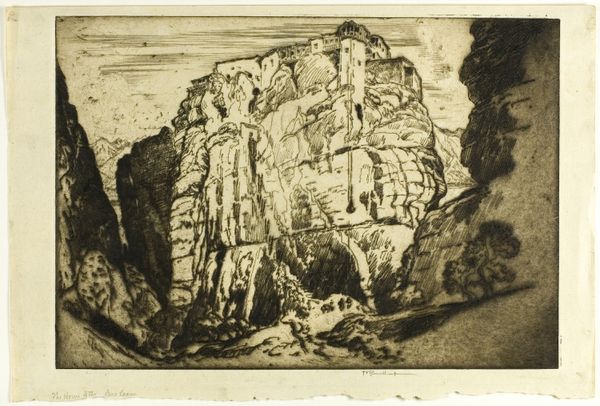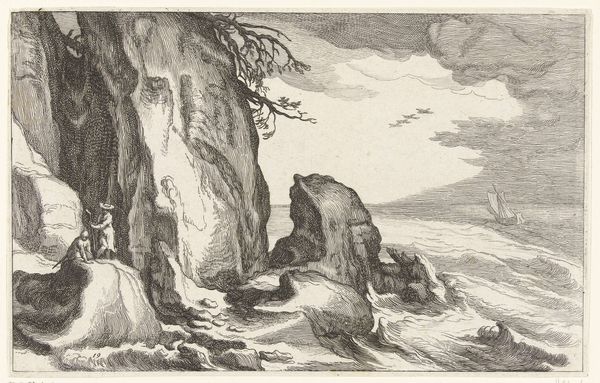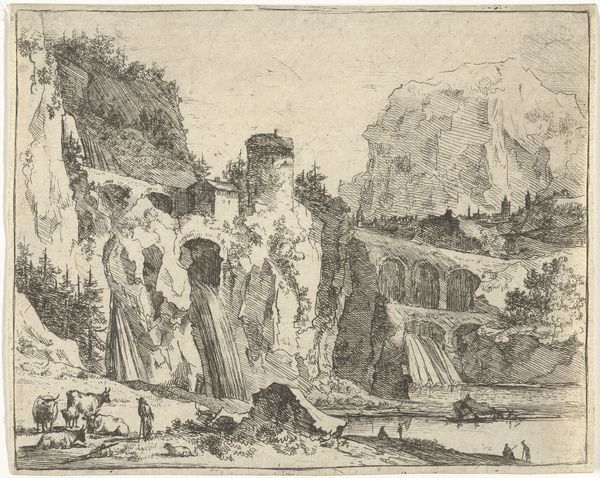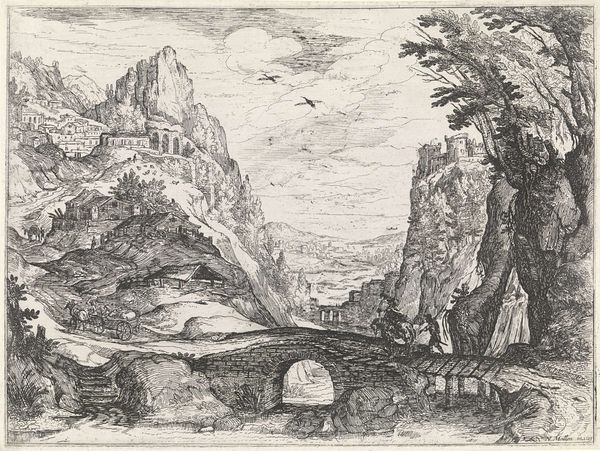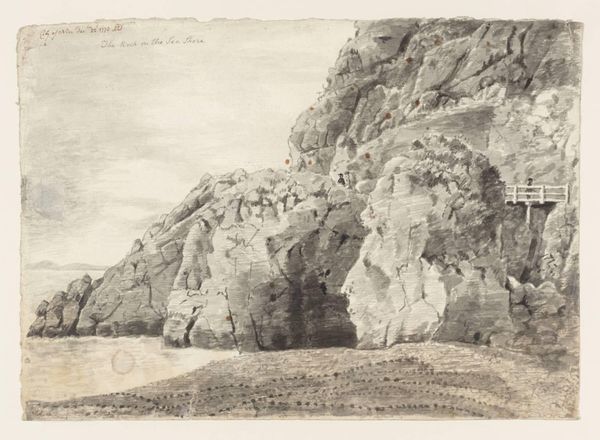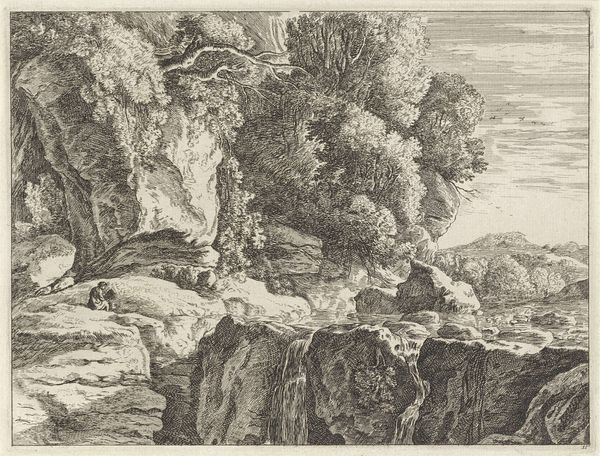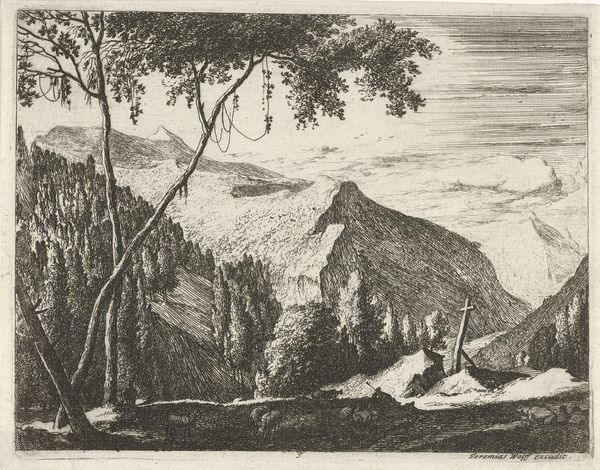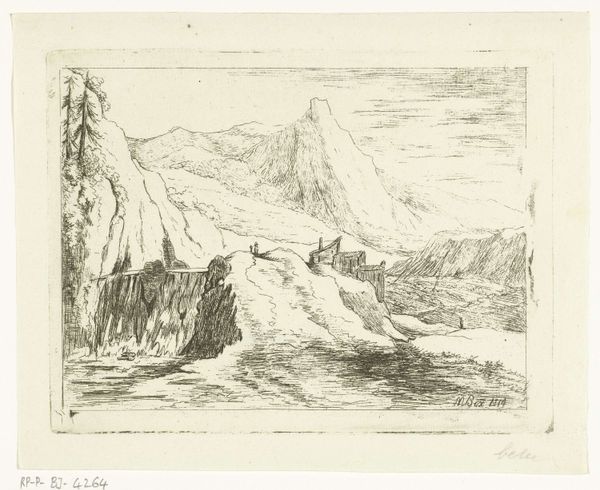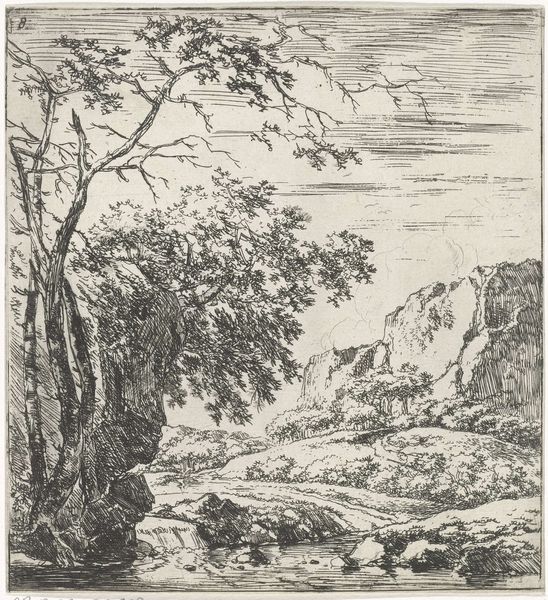
drawing, print, etching
#
drawing
#
dutch-golden-age
# print
#
etching
#
landscape
#
river
#
etching
#
figuration
#
mountain
Dimensions: height 131 mm, width 247 mm
Copyright: Rijks Museum: Open Domain
Curator: This etching, created by Roelant Roghman, probably somewhere between 1647 and 1692, is titled "Berglandschap met rotsen," or "Mountainous landscape with rocks". It resides here at the Rijksmuseum. What strikes you first about this scene? Editor: Immediately, I notice the dominance of the vertical rock formations. They give the whole image this sense of imposing, almost gothic grandeur, despite being a natural landscape. There's a humbling power radiating from it. Curator: Roghman's style really captures that monumental feel, doesn't it? Dutch Golden Age landscapes often celebrated the local countryside, but this is something different. There’s a theatricality here, like a stage set for some grand historical drama, or biblical narrative. The mountain could echo motifs of trials or transcendence. Editor: Precisely. And even though the figures are small, almost insignificant, they provide the scale. Look at the detail he renders on the figures—tiny marks, but he clearly portrays their motion and relationship to this wild, craggy stage, almost a meditation on mankind's precariousness in face of nature's might. Curator: Right. Those tiny figures, walking with their dog, highlight the vulnerability of mankind within such a landscape. In terms of printmaking, Roghman's skilled at varying his line work here— he evokes rough textures and the smoothness of distant surfaces with minimal tones and varied lines, the density and angle contributing greatly to texture and atmosphere. Editor: Absolutely. The etching technique allows him to build up shadow and create real depth, accentuating that looming effect those cliffs have, and almost creating this sense of a divine overlooker with a very low point-of-view. The rugged individualism associated with that period makes it interesting to wonder if this also reflects cultural anxieties, or simply artistic awe towards the natural world at a certain moment in social history. Curator: That’s definitely a key perspective. The play of light, the strong vertical lines contrasting with those smaller human figures -- it's more than just topography. There's an invitation to consider both individual insignificance and enduring strength amid nature's grandeur. Editor: It’s these echoes between cultural values and artistic visions that I appreciate – it gives Roghman’s "Berglandschap met rotsen" layers beyond simply the pictorial. Curator: A truly unique example of how landscapes during that time could reflect not just what was seen, but what was felt.
Comments
No comments
Be the first to comment and join the conversation on the ultimate creative platform.
